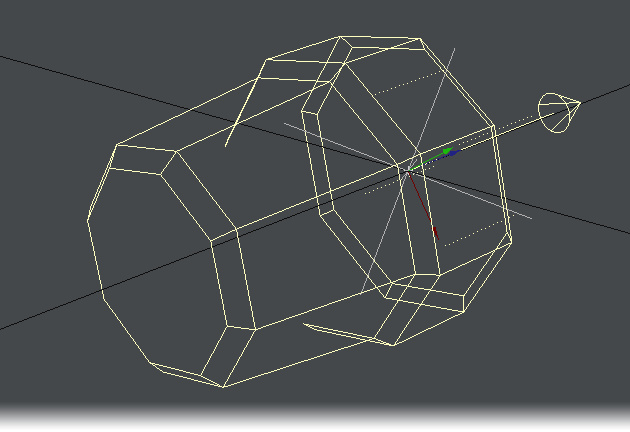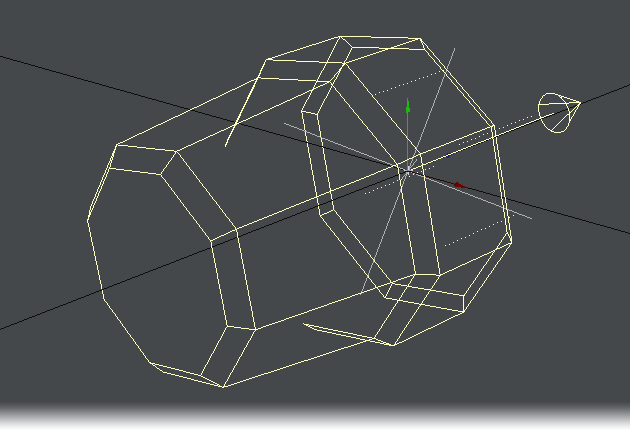Coordinate System
Coordinate System
The Coordinate System setting (Modify > General > Coord System) affects the Move, Rotate, and Move Pivot Point tools.
World (default keyboard shortcut Shift F5)
World allows easy movement based on the world axes, even for items deep within a hierarchy that contain rotated parents.
Parent (default keyboard shortcut Shift F6)
Parent is for movement based on the axes of an item’s parent(s). If an item has no parent then this setting is equivalent to World.
Local (default keyboard shortcut Shift F7)
Local is for movement based on an item’s own axes (such as dollying a rotated camera along its view direction). For un-rotated items it is equivalent to Parent. Local can be temporarily activated by holding Ctrl.
Example
Below, we have rotated a null and then parented a distant light to it. The Show Handles option, discussed later is also active for illustration purposes, as it is by default. The handles will line up with the movement axes that would be used if you dragged your mouse.
Local
Parent
World
Note how with World, the handles line up with the lines on the grid. With Parent, the handles line up with the rotated (parented) null. Finally, with Local, the handles line up with the distant light’s rotation.
The Position and Rotation Coordinate System settings are independent. To change the system, select either the Move or Rotate tool first.
One thing to remember about Local and World rotation is that they are only for interactive manipulation. Internally, the Parent system is always used since it’s the only one that can encode absolute rotation values. This will affect how an item’s orientation is interpolated between two keyframes. As such, rotating the pivot point might still be useful in some situations.
Avoiding Gimbal Lock
Gimbal lock normally occurs after you rotate an item 90 degrees on its pitch using the Parent coordinate system. Once this has occurred, rotating the object about either its heading or its bank axis gives you the same result-you have lost the ability to rotate about the object’s local heading. Gimbal lock is commonly a problem with bones in a hierarchy. By nature, bones have a starting position that is often rotated 90 degrees on their pitch, like bones in the arm of a human figure. You can avoid Gimbal lock by rotating using the Local coordinate system.
Reset
You can quickly reset position and rotation to their initial states by selecting the item, activating the channel you wish to reset (i.e., Move, Rotate, Size, and other tools), and then clicking Modify > Reset. You can reset individual channels without being in the mode by hitting Reset Position, Reset Rotation or Reset Scale and all channels with Reset All.
If you plan to move a pivot point, you should reset the item’s position and rotation first.
Reset is not an undo feature, although it can sometimes work similarly. Resetting restores the state for the selected channels to what it was when the item was first loaded or created.
If you have Position or Rotation axes deactivated, Reset will have no effect on those settings.


